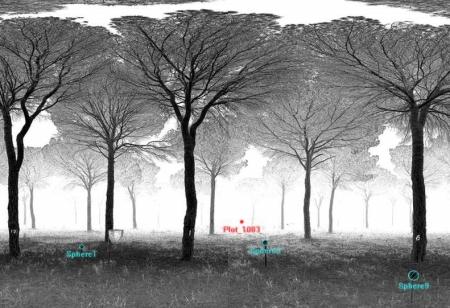
Objective:
The objective of the present study is to better understand the relationship between tree characteristics and cone production of Mediterranean stone pine. This was achieved by quantifying the gain in using detailed crown metrics in estimating cone production at individual tree level (number of cones per tree and average cone weight). Models based on traditional variables (tree size and stand characteristics) were compared to models that relied on crown metrics extracted from TLS data. The resulting models should help owners and managers to better predict cone production.
Context:
The pine nut kernels in the cones of Pinus pinea are forest nuts of great economic value. Cone yield harvesting rights are often sold through annual leases, the price of which depends on the expected yield which varies greatly between years (masting, cf. Calama et al. 2016). Visually evaluating cone production on standing trees is challenging since the cones are formed in the upper part of the crown. Hence, yield estimation is commonly performed out by using predictive models. This study evaluates how new remote sensing technologies such as terrestrial laser scanners (TLS) can be used to assess cone productivity, or to attempt to explain the tree-to-tree variability within a given stand.
Contacts:
RafaeL Calama, rcalama@inia.es, www.inia.es
Robert Schneider, robert_schneider@uqar.ca, https://www.uqar.ca
Further information:
Schneider R, Calama R, Martin-Ducup O (2020). Understanding Tree-to-Tree Variations in Stone Pine (Pinus pinea L.) Cone Production Using Terrestrial Laser Scanner. Remote Sensing 12: 173. doi:10.3390/rs12010173